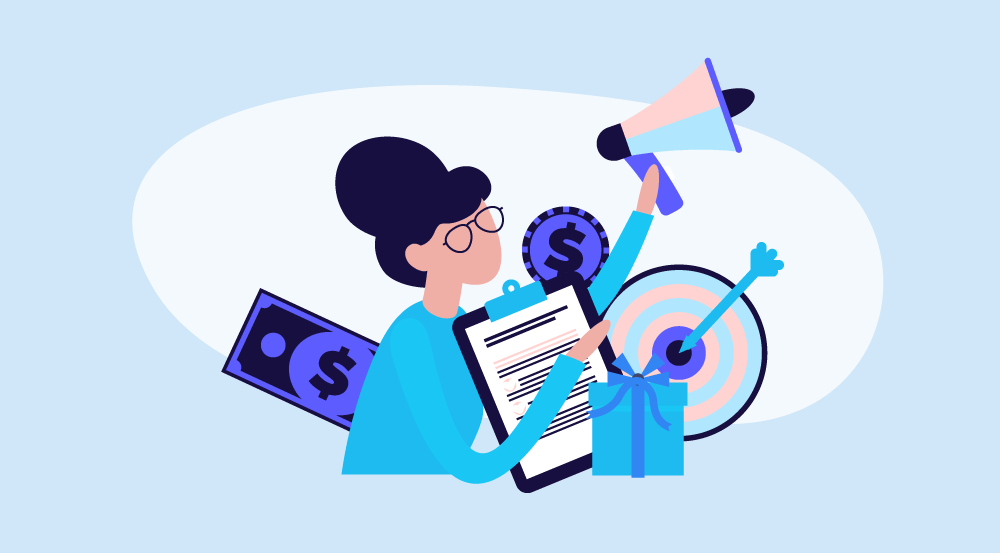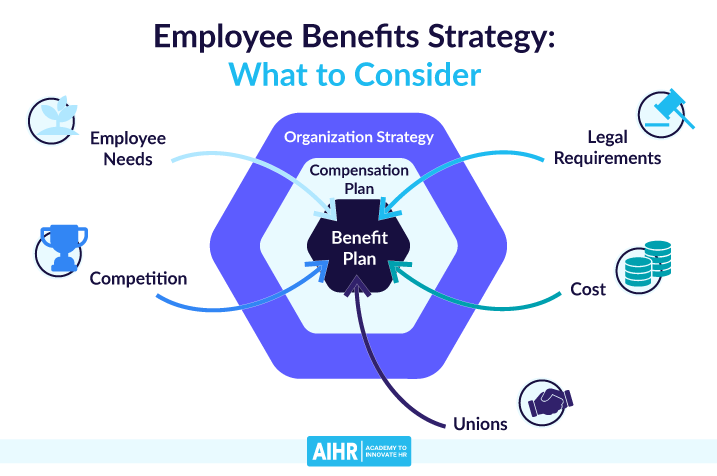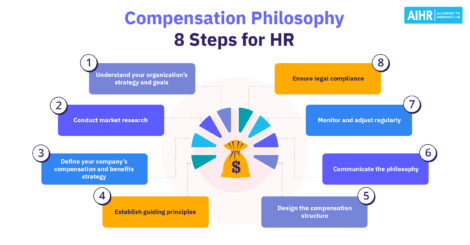9 Steps to Design a Solid Employee Benefits Strategy

A well-designed employee benefits strategy will help your organization navigate through an ever-changing candidate market. Attracting and retaining talent in your organization is one of the leading concerns for companies today. Not only is turnover costly, but when talent leaves, it affects the organization’s performance and may make it more difficult to keep other high-performing team members.
Understanding your employees’ needs and designing a crafted solution is one of the most critical aspects of successful HR management. Learn how to develop a customized employee benefits strategy in this article.
Contents
What are employee benefits?
Why does your organization need a strong employee benefits strategy?
How to design and improve your employee benefits strategy
What are employee benefits?
Before we get ahead of ourselves, let’s first discuss what employee benefits actually are. Some HR managers like to differentiate between the terms ‘benefits’ and ‘perks’. In this case, benefits are non-wage compensation that pays for expenses an employee would typically have to cover with their salary. For example, child care, commuting costs, and saving for retirement.
On the other hand, perks tend to be described as extra rewards or additional incentives, such as summer working hours, a pet-friendly office, or an onsite gym. These incentives generally add to an employee experience but are not always linked to a monetary value.
Together with salary, this becomes your total compensation package.
Why does your organization need a strong employee benefits strategy?
Doug Conant, the CEO of Campbell’s Soup, said, “To win in the marketplace, you must first win in the workplace.” He understood that in order to attract, retain and grow their employees, they must first create an environment that people love to work in. This, in turn, will create a company that thrives. While there are many pieces to this complex puzzle, one crucial aspect is having an excellent employee benefits strategy in place.
- Employee benefits help attract fantastic talent. We are in a candidate-driven market, which means jobs are abundant, and employers have to compete for scarce top-tier talent. One way organizations stand out from the crowd is by offering candidates an attractive employee benefits package. Studies have shown that 79% of men and 65% of women consider benefits in their employment decisions. Therefore, you’ll miss out on top talent if your perks are lacking.
- They help retain talent. According to LinkedIn’s Global Talent Trends report, companies that have great compensation and benefits saw a 56% lower turnover rate. More so than ever before, employees look for companies that invest and care for the wellbeing of their talent. A strategic employee benefits package encourages employee satisfaction and enables them to advance their careers in the company. While it’s undeniably great to keep talent, it also saves your company money. A report by Employee Benefits News stated that hiring a replacement employee can cost your company 33% of the ex-employee’s yearly salary. If you’re losing employees often, this is a substantial financial burden for your organization. In the long run, it is more cost-effective to spend money on benefits than to replace talent.
- They make employees happier and more productive. Research from Adam Grant shows that employees care about three things: career, community, and an ability to grow in their career. Good benefits planning will touch on all three of these crucial aspects to make employees feel cared for and happy. When your team members are happy, they are also 20% more productive.
How to design and improve your employee benefits strategy
There are several things you can do to put an effective employee benefits strategy in place.
1. Align your employee benefits strategy with your long-term business strategy
Consider what you want to achieve as an organization and think about how your benefits strategy can help you reach those business goals. For example, if your business strategy will include adding new, more senior roles to your team in the future, implementing benefits such as education reimbursement or mentorship programs can help your current employees successfully apply for those roles.
Not only will you not need to hire externally, which can take a long time to find the right person, but you also guarantee that your employee will see the benefit of staying with your organization.
2. Set goals for your benefits program
Having goals or objectives for your benefits program will help you decide what benefits are best for your company. If you are unsure where to begin, start with the SMART method. SMART is an acronym for Specific, Measurable, Achievable, Relevant, and Time-Bound. By working through those five steps, you will set measurable goals within a specified timeframe and define what success looks like.
An example of this could be something along these lines: “Introduce 3 new elements that focus on employee wellbeing and career growth into the benefits package within the next 6 months.” or “Maintain a benefits NPS of 65 from our employee feedback survey.”
Having a goal to refer to every time you review your benefits program will prevent you from adding benefits just for the sake of adding them rather than seeing them as a real business strategy.
3. Plan your budget
Whether you are a large company with a big HR budget or a small startup with a minimal budget, planning how much money you can put aside for compensation and benefits is an important step. You’ll need to consider your projected number of employees as well as the cost of potential new benefits.
The Bureau of Labor Statistics reported that benefits cost can be upwards of 30 percent of each employee’s total compensation. If you don’t currently have a benefits plan, make sure to reach out to numerous companies to get quotes on their offerings. Know that many benefits are tax deductible will also help you with planning. If you currently have a program, make sure you’re spending your money on things that align with your goals and make budget changes if necessary.
4. Learn about your employee demographics and employees’ needs and preferences
There are many ways to determine what benefits you want to offer your employee. One place to start is to understand your team’s demographics. What is the gender breakdown at your organization? What are the age groups you have?
Your benefits offer should be relevant to the diverse people within your organization. A study by Fractl found gender differences in benefits preferences. For instance, women placed more value on working from home and free daycare services than men. Studies like the one from Fractl are a great free resource to get you started.
Also, take into consideration the specifics of how your business operates. While deskless workers will appreciate benefits like autonomy over their scheduling and earned wage access, remote employees will profit from work from home setup budget and access to co-working spaces.
Check out the video below to find out which employee benefits best support remote work!
5. Gather feedback
Another way to get insight into your employee benefits strategy is by asking for feedback. There are several ways you can do this:
- employee focus groups led by HR
- anonymous surveys via email,
- including a couple of benefits-focused questions in your stay and exit interview.
Team feedback should give you insight into what your team wants and which gaps you currently have.
If you already have a benefits program, having frequent check-ins can help you determine if your benefits are still relevant for your team. Make sure you are also tracking candidate offer rejection reasons during recruitment. Should you commonly see that candidates are not accepting an offer you gave due to the perks, you should dig into this deeper to make sure you are competitive in the market.
6. Be data-driven
Once you have implemented your strategy, determine which metrics you should track to understand success. Track what benefits your workforce uses the most and which are not so popular. Make sure to measure this per different employee groups, as different groups have diverse needs. Do people experience any barriers that prevent them from making full use of your benefits offer?
You can also analyze your competitors’ benefits and see what they offer and what you don’t. But remember, just because your competitor has something you don’t, that doesn’t mean that is what your team wants.
7. Allow for flexibility
Diverse people value different things when it comes to employee benefits. Consider having a basic package and then letting employees mix and match the rest. That way they can choose what suits them best. It could be as simple as having a list of benefits your employee can choose from or having a fixed monthly budget that your employees can spend on things such as wifi or gym membership costs.
8. Communicate your benefits offer in a clear and transparent way
Whether you are building an employee benefits package from scratch or just renewing your current one, make sure you communicate this well to your employees so they know how to take full advantage of what you are offering. You can have one-pagers, newsletters, and FAQs, to name a few. You can also implement a benefits platform that would make it easy for the employees to access your benefits offer. Should your benefits also offer things around growth, such as an education budget, make sure that you train managers on how to communicate this offer during performance reviews.
Any resources that you create for your employee can be recycled during the recruitment process as well. Make sure your recruiters are not only explaining your company’s competitive benefits to potential hires, but you can also email one-pagers or newsletters to remind your candidate about why they should join your team.
9. Be ready to answer questions
Even when you communicate clearly, your employees will have questions about your benefits program. After spending a lot of time and energy creating an excellent benefits package to support your team’s wellbeing and career growth, it would be a shame if they didn’t know how to take advantage of them. Provide opportunities to get questions answered, like regular Q&A sessions or quick replies on Slack.
The takeaway
A solid employee benefits strategy will not only help you attract candidates to your company but will also keep your team happy and boost productivity, all while reducing turnover.
Your goal should be to create your own version of an employee benefits program while considering flexibility, inclusion all while keeping in mind your company’s goals. Using any of these nine steps to improve your employee benefits program can make a positive impact on your company’s employee experience and support you in setting your team up for success.
All in all, an effective employee benefits strategy will support your organization’s long-term goals and help it gain a competitive advantage as an employer.
Weekly update
Stay up-to-date with the latest news, trends, and resources in HR
Learn more
Related articles
Are you ready for the future of HR?
Learn modern and relevant HR skills, online











